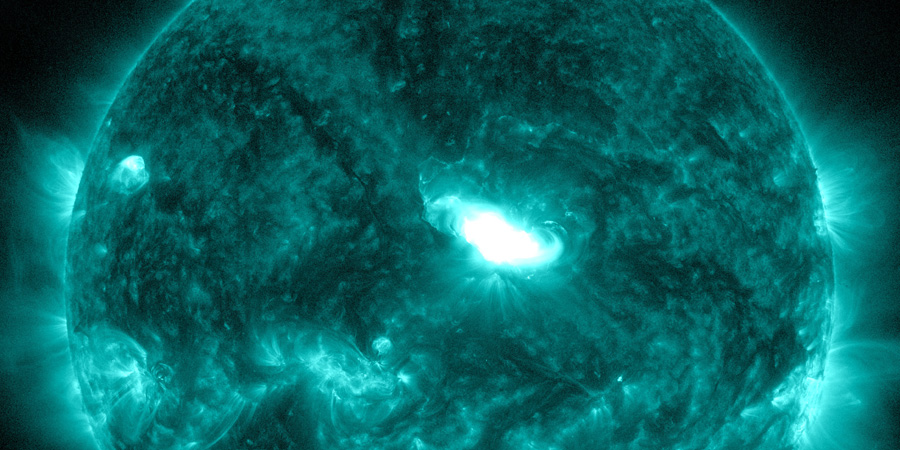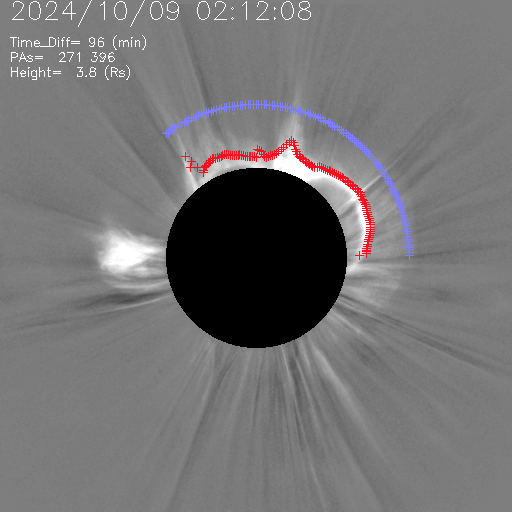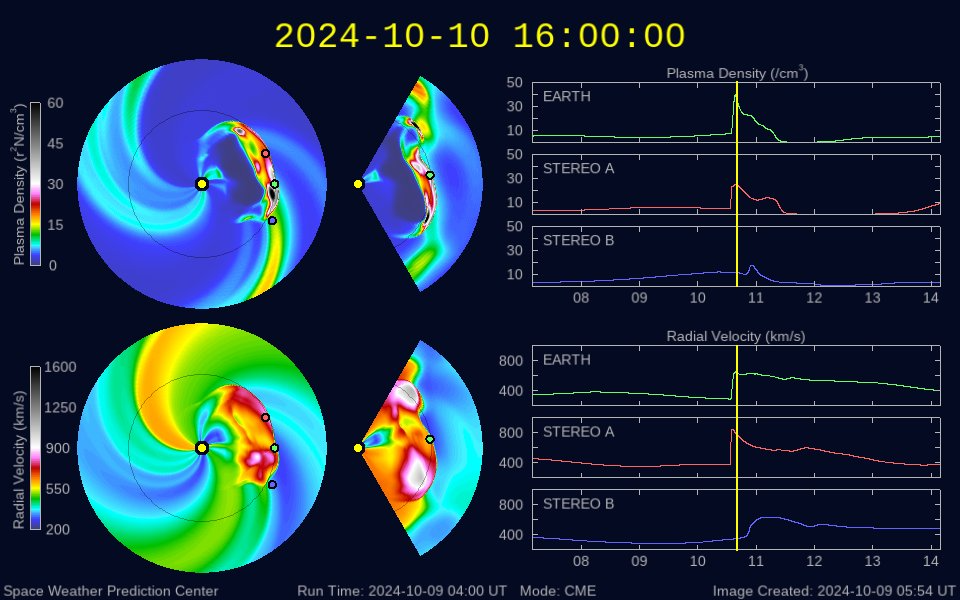X1.8 solar flare, severe geomagnetic storm watch
Wednesday, 9 October 2024 14:29 UTC

Wow. We are writing this news article with a heart filled with excitement. This night at 01:56 UTC we had a major solar flare which launched an equally as impressive coronal mass ejection into space. Earth-facing sunspot region 3848 produced a long duration X1.8 solar flare (R3-strong) which peaked at 01:56 UTC. This region is in a perfect earth-facing position and it became quickly clear that it was an eruptive solar flare.
Type II and IV radio emissions were observed along with other telltale signs like coronal dimming and at the time the beginning of an S1 solar radiation storm. This has at the time of writing escalated to a strong S3 solar proton storm which is only the second time we reached the S3 level during the current Solar Cycle thus far.
However, we turn our attention to the coronagraph imagery from SOHO/LASCO right now and we can without a doubt see the impressive halo coronal mass ejection which is aimed directly at Earth. You can nitpick and say the majority of the ejecta is heading northwards but the full halo outline is gorgeous and we are going to get a direct hit from this event.

The coronal mass ejection is fast and could arrive already tomorrow evening (UTC time), Thursday, 10 October based on our calculations with the NOAA SWPC going for an impact around 16 UTC. In response, the NOAA SWPC has issued a G4 or greater geomagnetic storm watch which stands for a Kp of 8 or perhaps even Kp9! This is totally justified based on the data we have available. Of course it remains a dangerous game to compare this event to events like we had last May where we did reach the Extreme G5 geomagnetic storm level but there is absolutely a chance we get to see a similar event like we had back in May if the solar wind and IMF parameters are favourable. This could very well be a rematch for those who missed the storm back in May when aurora was seen visible overhead from latitudes like England, Belgium and Germany in Europe and a decent portion of the upper United States. Do not go anywhere the coming days, keep your phone charged, SpaceWeatherLive open in your browser and have the alerts turned on in our app. This could be good for those of you in locations who normally do not get to see aurora.

Thank you for reading this article! Did you have any trouble with the technical terms used in this article? Our help section is the place to be where you can find in-depth articles, a FAQ and a list with common abbreviations. Still puzzled? Just post on our forum where we will help you the best we can!
Latest news
Latest forum messages
Support SpaceWeatherLive.com!
A lot of people come to SpaceWeatherLive to follow the Sun's activity or if there is aurora to be seen, but with more traffic comes higher server costs. Consider a donation if you enjoy SpaceWeatherLive so we can keep the website online!

Space weather facts
| Last X-flare | 2025/03/28 | X1.1 |
| Last M-flare | 2025/04/18 | M4.4 |
| Last geomagnetic storm | 2025/04/16 | Kp8- (G4) |
| Spotless days | |
|---|---|
| Last spotless day | 2022/06/08 |
| Monthly mean Sunspot Number | |
|---|---|
| March 2025 | 134.2 -20.4 |
| April 2025 | 120.5 -13.7 |
| Last 30 days | 116.6 -25.7 |


